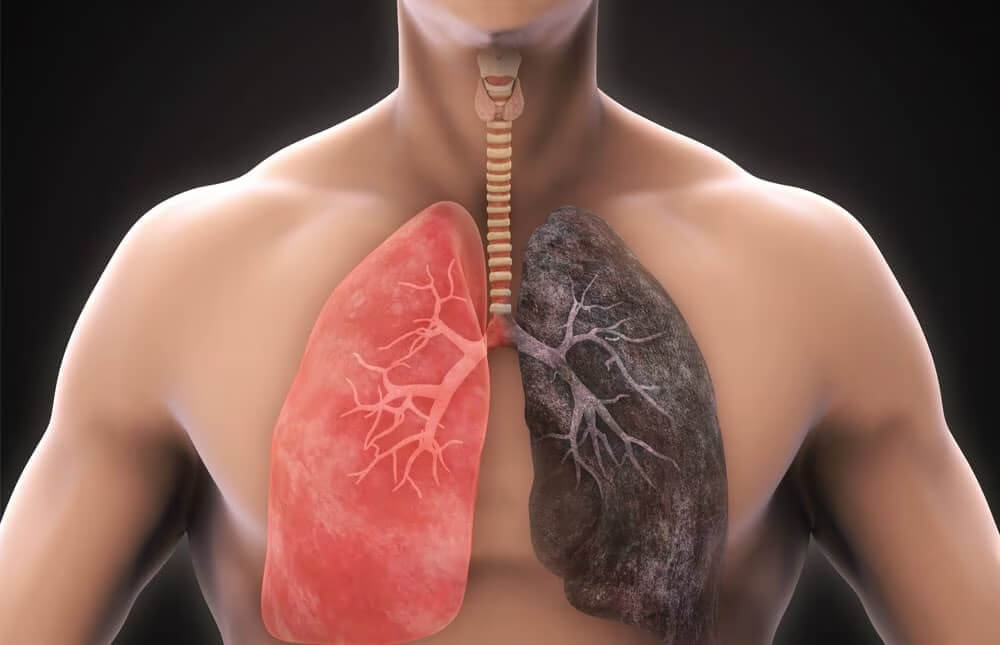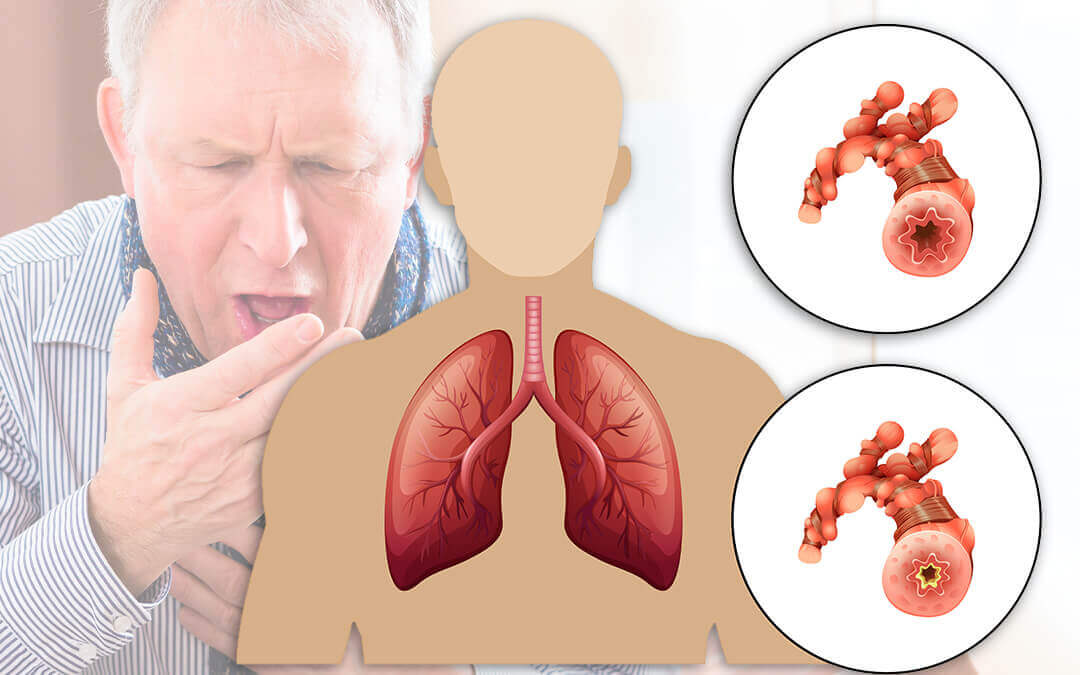Calls for Ukraine
Calls for Europe
Calls for USA

Chronic obstructive pulmonary disease is a widespread disease throughout the world. According to the World Health Organization (WHO), it affects about 10% of the adult population. COPD is the fourth leading cause of death in the world, causing a significant public health threat. That is why there is currently an active search for methods of treating this serious disease, and stem cell therapy may become one of the most promising areas in this area.
COPD is a chronic, progressive disease characterized by airway obstruction and limitation of the flow of inhaled and exhaled air. The most common types of COPD are chronic bronchitis and emphysema. The disease is chronic and progresses over time. Currently, COPD is considered an incurable disease, but new therapies are being actively studied that can give patients hope for recovery.
The main cause of COPD is exposure to tobacco smoke. People who smoke have a 15% risk of developing this disease. Chemicals in tobacco smoke cause macrophages (scavenger cells) to release factors that cause an inflammatory response and subsequent destruction of lung tissue.
Other possible causes of the disease include:
Determining the exact cause of COPD allows the doctor to develop the most effective treatment strategy.

The most common early warning signs of the disease are:
As the disease progresses, patients begin to quickly get tired when walking, and also experience breathing problems (the inability to take a deep breath, a feeling of lack of air).
At the initial stage, the doctor listens to the patient’s complaints, studies the medical history and conducts a physical examination. The following diagnostic tests may be prescribed:
If you need a diagnosis of chronic obstructive pulmonary disease, call or use the feedback form. The MedTour coordinator will select for you the best clinic for diagnosis and treatment of COPD for free.
The goals of standard therapy for the disease are to relieve symptoms, reduce the frequency of exacerbations, and increase physical endurance. The treatment program may include the following:
The most radical treatment for COPD is a lung transplant.

Standard drug therapy for COPD using bronchodilators and inhaled corticosteroids has limited effectiveness in reducing exacerbations of the disease and improving lung function. There is also no evidence that such treatment increases the life expectancy of patients with COPD.
It was previously thought that the only way stem cells could work was through their ability to transform into damaged cells in the body. However, today researchers are discovering more and more mechanisms by which cell therapy will achieve success in treating a wide range of diseases, including obstructive pulmonary disease.
How do stem cells work in COPD?
There are several mechanisms by which cell therapy can improve the condition of patients with COPD:
The properties of stem cells are not yet fully understood, however, current evidence suggests that regenerative medicine has great potential in the treatment of emphysema and chronic bronchitis.
What do stem cell studies say?

Preclinical studies have demonstrated promising results with mesenchymal stem cell (MSC) therapy for lung diseases including emphysema, bronchopulmonary dysplasia, fibrosis, and acute respiratory distress syndrome.
A review of 15 studies showed that the use of various cell therapy protocols for COPD was well tolerated by patients, did not cause side effects, and improved the condition and quality of life of patients.
There is also evidence that cell therapy using MSCs (mesenchymal stem cells) is a promising strategy for the treatment of COPD. MSCs can be easily isolated from the bone marrow, adipose tissue, or peripheral blood of the patient himself. Both in vitro and in vivo studies have demonstrated the regenerative potential of MSCs, which lies in their ability to stimulate the regeneration of the epithelium and endothelium of the airways, as well as restore the architecture of lung tissue in lungs affected by emphysema.
In addition, MSCs modulate immune responses and reduce inflammation. The exact mechanisms are not yet clear, but scientists suggest that the therapeutic effect is achieved through the production of paracrine factors such as cytokines and growth factors.
MedTour company closely monitors innovative developments in the field of medicine and tries to make them more accessible to patients. We currently offer a unique opportunity to treat COPD with stem cells. To learn more about the latest therapy methods, contact our coordinating doctor or fill out the feedback form.
Life expectancy for patients with COPD varies greatly depending on various factors, such as the severity of the disease, the presence of complications, treatment methods and lifestyle. In general, as the disease progresses it can shorten life expectancy. However, with proper symptom management, timely treatment and lifestyle changes, most patients with COPD can control their condition for many years.
MedTour company cooperates with leading clinics in the world that provide services for the treatment of chronic obstructive pulmonary disease. Currently, in addition to standard therapy, we provide a unique opportunity to treat COPD with stem cells. To find out more, get a free consultation with a coordinating doctor.
You can consult about the treatment of COPD with Andriy Kovalchuk, a surgeon, Candidate of Medical Sciences, who has extensive experience in using cell therapy methods in various medical fields, including the treatment of pulmonary diseases.
What is the difference between COPD and asthma?
Both COPD and asthma are chronic lung diseases. The main difference between the two is that COPD is a progressive, incurable disease, while the symptoms of asthma can be controlled quite well with medication. Currently, new methods of treating chronic lung diseases have emerged. And the most promising of them is cell therapy. It has been successfully used to treat both obstructive pulmonary disease and asthma. To find out more, get a free consultation with a MedTour coordinating doctor.
Can chronic obstructive pulmonary disease be cured?
Unfortunately, standard methods of therapy only help to slow down the progression of the disease, but not to cure it completely. However, there are innovative techniques that give hope to patients with COPD. The use of cell therapy helps restore damaged lung tissue and improve the condition and quality of life of patients. Get a free consultation with a MedTour medical coordinator.
Is it possible to stop the development of COPD?
Currently used treatment methods, such as drug therapy, pulmonary rehabilitation, oxygen therapy, cannot prevent the development of COPD. They only relieve symptoms. But there are new methods that can restore damaged lung tissue and significantly slow down the progression of the disease. To learn more about cell therapy for COPD, contact MedTour medical coordinator.
Please rate the work of MedTour
